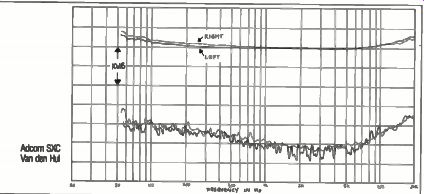
| Home | Audio mag. | Stereo Review mag. | High Fidelity mag. | AE/AA mag.
|
A.H. Cordesman carries out a post-CD survey
It is a relief to get back to cartridges. For all the improvements in CD players, I still listen to hear how free they are from musical faults. When I listen to analog phono components, I do so to hear how enjoyable they make the music. No-one can honestly deny that CD players are getting better, but I find that CD's outstanding technical specifications are still not accompanied by a matching enjoyability and musical believability.
The evidence is fairly easy to summarize. With the right combination of cartridge tone arm, and turntable, the analog record still provides a consistently more realistic soundstage, particularly in terms of depth. Musical instruments are sweeter, and have more musical detail. Musical dynamics are more natural and exciting, and bass has more natural definition and impact.
Put more simply, if I had to choose between investing in the best CD player and the best analog phono front end, I'd invest in the analog option every time Furthermore one of the things I learned as a result of this cartridge survey is that cartridges are improving faster than CD players. The latest generation of CD players have fewer faults, but they still lack musical excitement. The latest generation of cartridges are much more believable and ex citing than their predecessors, even though several older cartridge designs still consistently outperform the newest CD players.
The search for a reference cartridge is, therefore, as important as ever, ranking in social meaning with the search for an honest TV evangelist, and the best cola. Given the quality of the candidates to date, I can even guarantee that your choice of cartridge will do more to improve your life than your vote for the next President. In fact, if you are a keen student of British philosophers, you may even agree that a good reference cartridge offers more than sex. To paraphrase Lord Chesterfield, the pleasure is less fleeting, the position less ridiculous, and the expense slightly less damnable.
More seriously, if you do find the right reference cartridge-one that "locks in" to the rest of your system and matches your electronics and speaker-it tends to make all of the music you listen to come alive (something no serious high-end reviewer I know of has yet said about a CD player). I will immediately cede the point that some of the resulting musical life and believability in an analog phono front end may reflect some degree of euphonic coloration. So what? Pleasure is the name of the game, in my opinion, and coloration is better than irritation.
I should note, however, that the search for a reference cartridge is different from a survey of recent products. It is a search for a cartridge that makes you want to listen to music. A reference cartridge has to be more than simply good value for money, exotic, technically "interesting," or capable of providing new musical "insights." It must succeed in making your system and your music come alive over a pro longed period. I have closets filled with technically interesting cartridges that revealed sounds on my records that I never heard before and have never wanted to hear again.
Technical Criteria
At the same time, a reference cartridge has to measure reasonably well in terms of frequency response, separation, and tracking. There is still a great deal we don't know about the subjective meaning of cartridge measurements, but a true reference cartridge has to be able to track the record, and must perform well in technical as well as in listening tests.
These technical performance characteristics are reflected in the frequency graphs that ac company most of the cartridges discussed in this article, and in the data in the table, which show tracking performance, balance, and out put. These data are provided for most of the cartridges I felt deserved true reference ranking, although in some cases I could only keep a cartridge long enough for listening tests, or the measurements were not reliable or consistent enough to merit inclusion.
The frequency-response curves shown, made with the JVC TRS-1007 Mk.II test record, are more honest than those that come from manufacturers simply because the sweep rate is much slower. If the plotter is set to race through the printout, the needle tends to pro duce a straight line in the upper octaves regard less of the actual response. As a rough rule of thumb, however, one must be very careful about the meaning of measured frequency response below 150Hz or above 5kHz. The apparent bass energy in a cartridge bears no clear correlation to its performance on a test record.
Most moving-coils show a rise in frequency response above 5kHz, but only some exhibit this rise sonically.1 Having a smooth, balanced separation curve for both channels is more important than having high separation per se, in my opinion. I could not hear any clear correlation between measured separation and the sonic quality of the soundstage, but I often heard problems when a set of response curves showed irregularities in the crosstalk signals.
As for cartridge output, the very best cartridges have evolved to the point where it is clear they do not need an external life-support system. Any output above 0.3mV/cm/s is adequate for any good preamplifier with a moving coil gain stage, and any output above 1.2mV/ cm/s is adequate for good moving-magnet stages. Outputs below 0.3mV tend to lead to problems, even with the better transistor pre amps: such cartridges having, in my experience, a thinned-out sound, diminished bass, and compressed dynamics. This is true even when the preamp has ample gain and signal/ noise ratio. This is one reason I have not included Audionote models or the Ortofon MC-2000; their output is so low that their sonic performance virtually does not matter.
There is no equally good preamp or step-up device to use them with, and the improvement in the sound of other cartridges has reduced them to exercises in engineering sadism.
------- 1. AHC does not present the whole story here, as measured low- and high-frequency response generally does correlate quantitatively with perceived tonal balance In other words, the common mid-to-low-bass rise featured by the Koetsus, for example, is reflected in the amount of bass energy heard. What is not indicated is the quality of those low frequencies, whether they arc transparent or not, well-defined or boomy, etc. Regarding high frequencies, you will always hear the tonal result of a tilted-up response, but whether you will perceive the cartridge as "bright - and be bothered by the excess of HF energy, or just regard the sound quality as having a "light" balance, depends on many other factors: distortion, phase response, the Q of the tip-mass resonance, the depth of the ubiquitous midrange depression, etc.
-------------.
------------
TABLE: Cartridge Measurements
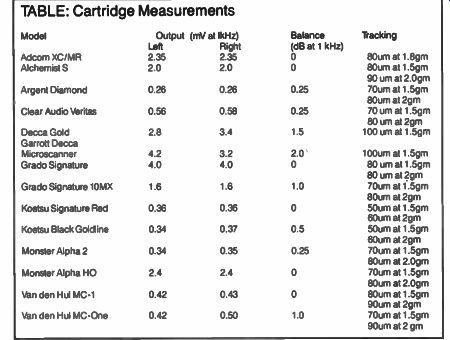
Model Adcom XC/MR Alchemist S Output (mV at 'kHz)
Left Right 2.35 2.35 2.0 2.0 Argent Diamond 0.26
0.26 Clear Audio Veritas 0.56 0.58 Decca Gold 2.8 3.4 Garrott Decca Micro-scanner Grado Signature Grado Signature 10MX Koetsu Signature Red Koetsu Black Goldline Monster Alpha 2 Monster Alpha HO Van den Hul MC-1 Van den Hul MC-One Balance Tracking (dB at . 1 kHz)
o 80um at 1.8gm o 80um at 1.5gm 90 urn at 2.0gm
0.25 70um at 1.5gm 80um at 2gm
0.25 70 um at 1.5gm 80 um at 2gm 1.5 100 um at 1.5gm 4.2 3.2 2.0 100um at 1.5gm 4.0 4.0 0 80 urn at 1.5gm 80 urn at ?gm 1.6 1.6 1.0 70um at 1.5gm 80um at 2gm
0.36 0.36 0 50um at 1.5gm 60um at 2gm
0.34 0.37 0.5 50um at 1.5gm 60um at 2gm
0.34 0.35 0.25 70um at 1.5gm Mum at 2.0gm 2.4 2.4 0 70um at 1.5gm Mum at 2.0gm
0.42 0.43 0 80um at 1.5gm 90um at 2gm
0.42 0.50 1.0 70um at 1.5gm 90um at 2 gm
----------------
Channel balance is worth watching. Differences of 1-dB or more are common, and this is enough to mean careful balancing of the system every time you play a record. Slight differences in output balance manifest them selves as a tilt in the soundstage to the right or left, and unless you make active use of the preamp's balance control, you'll never be fully satisfied with an unbalanced cartridge.
Tracking ability capable of coping with 80 microns (urn) recorded amplitude within the rated tracking force for a given stylus type seems to be perfectly adequate. The improvement from 70 to 80um is apparent on most demanding passages, but the improvement from 80 to 90um is rarely audible.
System interface and synergy
You should be aware of the fact that cartridge reviews are a bit more difficult and uncertain than most subjective reviews. Cartridge sound characteristics are not easy to describe reliably because they cannot be divorced from the associated equipment and set-up. While the basic sound character of a given cartridge is rarely tonearm-, turntable-, or set-up dependent (apart from the very low bass, where the tuning of the LF resonance due to the cartridge compliance and the arm's effective mass, will have a significant effect), the nuances of its performance are. This makes it easy to over review cartridges, and to start comparing sound characteristics which are dependent on the associate tonearm and turntable.
Soundstage details and imaging are especially system- and set-up-sensitive. The finer details of both timbre and soundstage vary according to tonearm and turntable, and any review that gets into exhaustive detail in this area is simply a fantasy: unless you have the same system as the reviewer, you will hear something different.
Turntable and tonearm also powerfully affect other aspects of cartridge performance, particularly bass. The Goldmunds, SCYrAs, and VPI, for example, produce more deep bass
-----
2. There are valid rules for matching cartridge compliance and tonearm effective mass, but sample-to-sample variation in cartridge compliance is so great that the nomographs involved have little real-world value, in my opinion. Others differ.
-------------
than the Linns and Oracles. Most of the cheaper high-quality turntables--the ARs and Duals- are light in the deep bass. The only affordable turntable with deep bass is the Sonographe, and then only when used with a medium weight clamp.
The sound of many musical details varies ac cording to system. The upper midrange is particularly tonearm-sensitive. For example, the character of sibilants in female voice or the bowing sound of the violin will change when a cartridge is mounted in a different tonearm.
The same is true of low-level passages and harmonics, treble detail, and overall dynamics, although dynamics seem to be more turntable-sensitive.
Turntables which combine a plastic platter surface with a good clamping system tend to produce more controlled dynamics but more overall sound energy than 'tables with a felt, plastic, or other mat. The latter produce selective increases in dynamics in some parts of the frequency range which can be exciting or euphonic, but which generally get a bit wearing-particularly with really well-recorded classical music.
This means the search for a reference cartridge is never simply a search for a cartridge.
It is an exercise in synergism, where the ultimate goal is a front-end "system" in which the cartridge, tonearm, and turntable really match.
The following reviews attempt to get around this by using a range of equipment. They are based upon using the cartridges in the following turntable/arm combinations: SOTA Star Sapphire Il with the SME V tonearm; the VP! HW-19II with the Dynavector 507A and the Eminent Technology Il tonearms; and the AR turntable and arm. A range of different electronics, cables, and speakers was also used.
The reported results emerged consistently over a wide range of equipment and music.
Cartridge Set-Up.
Set-up is supremely important. Poor alignment can produce much the same degree of degradation as using a poor turntable or tonearm.
The cartridges included in this review were set up with a Dennesen protractor and confirmed with a two-point protractor or the Eminent Technology protractor. The azimuth was con firmed with a mirror, and the top candidates were checked for equal crosstalk in both channels to get a precise measure of azimuth adjustment. VTA was checked by ear, although there is a far better correlation between having the cartridge body parallel to the record than in the past. Sidethrust, still a major problem, was also adjusted by ear. The tracking down-forces on the SME and Dynavector arms were set with half the force coming from the counter balance and half from the spring.
It became very clear during this process that a painstaking set-up is even more important than it used to be: virtually any minor tweak has at least a minor impact on the sound. Only major set-up error really matters, however, and there are no agreed rules as to some aspects of final adjustment. I would agree that the obsessive audioholic, in search of pure technical ac curacy or ultimate resolution, can only go mad in an effort to resolve all the uncertainties inherent in trying to choose between one adjustment of any given tweak or another.
Nevertheless, even the rare audiophile who loves music above such madness still needs to be sure his or her reference cartridge is set up according to the following rules:
A medium-mass tonearm should be used in which there is no tendency to move to the right or left when the tonearm is neutrally balanced, the bias compensation set at zero, and when a low breath will move the tonearm easily to either side.
A reviewer can have great fun at shows by grabbing the tonearm tube, appearing to yank as hard as possible, and yelling "loose bearings!" It is almost as much fun as breaking the knobs off prototypes. There is no way that an amateur can really appraise bearing quality, however, and about the only thing you can really test for is imbalance or friction. These, however, are well worth testing for: far too many high-priced arms still have lousy quality control. Further, test the cartridge and tonearm mounting screws to make sure they are really tight. I have seen more tight (or drugged) dealers than tight cartridge and tonearm installations.
Overhang should be checked with a two point protractor. While the one-point system is roughly equivalent, it depends a bit too much on either a locatable tonearm pivot point or the cartridge geometry matching the parameters set by the tonearm designer. Any good audiophile dealer can help you perform this alignment, and a reputable dealer will show you that the cartridge has been properly aligned if he installs it. You should be warned that far too many dealers rush this aspect of set-up or do not know how to do it. A dealer who cannot or will not perform this service or demonstrate its accuracy as part of a sale is neither competent or reputable. Never trust any dealer to do it without a demonstration!
The front of the cartridge body should move across the record so that the bottom of a rectangular cartridge body is parallel to the record, or an imaginary vertical line through the cartridge is at a 90 ° angle to the record.
Ideally, the "motor" of the cartridge should be at the precise angle that produces equal crosstalk in each channel, but this requires a test record and a cartridge-alignment aid like the Shure or Signet. If you find that equalizing crosstalk in both channels requires an excessive tilt of the cartridge body, return it to the dealer-the generator and stylus axes are too different for both optimal tracking/tracing and crosstalk. [3]
Tonearms that are otherwise superb-the Alphason, Linn Wok, and SME V, for example- do not permit adjustment in this area. There is a rationale for this. Many tonearm designers argue that variable azimuth can only be provided at the cost of compromising rigidity, thus introducing resonant problems. This is undoubtedly true, but in my opinion, precise azimuth alignment is necessary to get the best imaging and soundstage performance from an expensive cartridge If this is important to you, you should investigate arms like the Air Tangent, Eminent Technology, Goldmund, Grado, Souther, Syrinx, and the Triplanar. Further, Sumiko sells an excellent standard headshell that can be used with any arm with a standard
----
3 A skilled technician can perform a measured azimuth adjustment in about 15 minutes using a test record and a dual trace scope. This requires a cartridge analyzer or black box for best results. The Shure cartridge-alignment system is no longer sold, but is still used by some dealers. The Signet system is only available at Signet dealers. his well worth hiring an audio technician to use such devices; adjustment by eye is simply not accurate nor is stylus alignment relative to the cartridge body. Differences of 5-10dB are common in such set ups, and they are reflected in every aspect of soundstage performance. Also be advised that most high-end dealers haven't the faintest idea of how to conduct such adjustments. Unless you see them made in front of you, you can virtually count on the fact that they aren't being made and that claims to the contrary arc false. Any dealer selling cartridges for several hundred dollars or more should, however. be able to make such adjustments. The technology involved is now about a quarter of a century old.
---------
socket. In fact, I will go so far as to say that any arm lacking azimuth adjustment has a critical design defect.* If I were in charge of compiling Stereophile's Recommended Components list, I would relegate even the SME V to no better than Class B. [5]
• Tracking weight should be set toward the top of the manufacturer's recommended range. Ideally, I would also check with a test record. This, however, is easier said than done and requires an experienced technician or enough listening experience to know what you are hearing. Be aware that low tracking forces are the fast track to distortion and permanent record damage and that setting down force for maximum tracking capability will dull the highs and dynamics, as well as producing some groove damage Either obtain a stylus tracking-force gauge or insist that the dealer demonstrate the setting. Far too many dealers rush out set-ups with the wrong tracking force.
• Bias should be set for the recommended tracking force. If you can't hear it, the visual testings of overhang are too uncertain to worry about. If you have really good eyesight and a blank record, however, the needle should hit the record at a 90° angle without a sudden tilt to either side. [6]
• Allow for break-in. The suspension of a cartridge consists of a piano wire and a rubber "doughnut," and it can take about 12 hours
-------- 4. Strong talk perhaps. but 1 issue an open challenge to John Atkinson, ). Gordon Holt, Harry Pearson, and Peter Moncrieff to listen to the differences between their favorite cartridge with a precisely adjusted azimuth, and the same cartridge with the azimuth error common in un-adjustable tonearms. The difference may have been acceptable in the past. but today's cartridges reveal it all too clearly.
--------
------------
5. In my opinion, this is too extreme a view. To place sound stage symmetry above all else when choosing a tonearm fails to take sufficient note of such factors as the presence or absence of resonant colorations and the ability of the tone arm to provide a stable mechanical "ground" against which the motions of the cartridge "motor" can be referenced. I would agree that precise azimuth adjustment optimizes the soundstage balance. In my experience, however, arms pro viding such adjustment suffer in other areas: upper-bass clarity, low-bass extension, and midrange transparency, in particular. Readers must decide for themselves their own order of priorities when choosing a tonearm, and not be un duly influenced into an unbalanced buying decision. Regarding AHC's challenge in the footnote above. I can't see how this comparison can be carried out without the result being confused by the introduction of another variable: a different tonearm for example, or rigidity being compromised by the use of shims. - JA
---- 6 Good luck. This is a real pain with most cartridges, and I have watched several "experts- discover that their adjustments seemed wrong when they attempted to confirm them.
--------
of playing music for this suspension to settle in. Don't set VTA or decide on cartridge performance before this point.
• Set the tonearm height so the flat plane of the lower surface of headshell or cartridge mounting surface in the tonearm is exactly parallel to the record when seen from the side If you can easily adjust VTA on your arm, or have experience enough to handle both the mechanics and the listening required to make your own adjustments, do so. You should find that there is a point where the upper midrange and the imaging "lock in" and provide the most musically natural combination of detail and sweetness. If you're not confident in per forming this adjustment by ear, do it by eye.
The results of the search Enough of the philosophy and deep ultimate truths-let's get to the products. I have tried to include all the cartridges I still feel to be candidates and to include as many new ones as possible Where I felt that a cartridge merited historical comment but not full testing, I have included a mini-update.
I also have only attempted to report on sonic characteristics that consistently emerged when I shifted from component to component and from system to system. My goal is to give you enough data to form your own short list, or to tell you when a classic appears to be outdated.
Adcom SXC/van den Hul: $450
Adcom XC/Microridge H: $325 The Adcom cartridges have always been sleepers. The top-of-the-line versions measure well, having flat, extended frequency responses
-----------
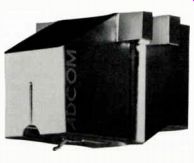
Adcom XC/Microridge II cartridge without any rise in the upper octaves, very good soundstaging, and good dynamics. They also do an excellent job of mirror-imaging the sound from a record so that it will match the timbre and dynamics of naturally recorded open-reel tapes and CDs.
If you are looking for a cartridge without coloration, with ample output for any tube preamp, and which blends in smoothly with the timbre and balance of a good CD or tape player, the Adcom XC and SXC are still very good buys. At the same time they do not have the detail and resolution of the state-of-the art cartridges, seeming just a bit veiled and almost too neutral. They lack the extra note of excitement that catches the ear or makes music come fully alive. The Adcoms are like a good third dub of a master tape-the sound is still excellent, but something is just slightly missing.
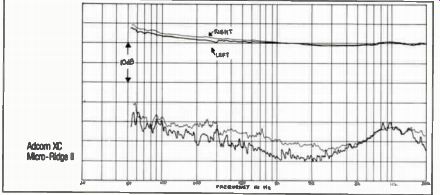
This is less true, however, of the cheaper Adcom XC, the Microridge stylus producing a sweeter and more realistic set of highs and upper midrange. At the price, the Adcom SXC is almost ideal for the tube or transistor pre-amp owner without a moving-coil step-up device and without large amounts of surplus cash. If it does not have the musical excitement and credibility of its higher priced competition, it is also easier to match to most systems.
Argent Diamond: $1200
The Argent Diamond is now a relatively old design, but is still a very good cartridge in some ways. The highs from about 2kHz up are very good, although the latest top-ranking cartridges now provide more detail and air in a more musically convincing manner. The Argent's overall sound is well balanced and musically convincing. It offers a great deal of speed and life, and can still produce consider able musical excitement.
Time, however, has passed this cartridge by in several important aspects. The Argents deep bass was never really state of the art, and most of today's reference cartridges do much better in terms of detail, dynamics, and control. The lower midrange is still acceptable, but lacks the detail and richness available in the competition; the slight lack of warmth and power is more apparent. The soundstage is only good, the competition providing significantly more depth, detail, air, and left-to-right information.
The top-ranked cartridges in this survey do all the Argent Diamond does in a considerably more musically convincing and exciting form.
Clear Audio Veritas: $800
The Clear Audio Veritas is still a very competitive model. It has good overall frequency response, good dynamics, a good midrange, and, at low frequencies, air and detail. The soundstage is sensitive to loading, but is always very wide and open. There is good depth, and-if you pay careful attention to getting the impedance loading and cables just right for your set-up-good imaging.
------------

Clear Audio Veritas cartridge
The Clear Audio Veritas does, however, have a problem which disqualifies it as a top finalist in this survey: There is something vaguely disturbing about the way in which it integrates information. The imaging is not quite as believable as its top rivals, nor the detail as convincing. This cartridge does not do anything wrong or anything less than well, but a pro longed comparative listening period made me conscious that the Clear Audio interferes with the clarity of the music.
Decca Garrott
At its best, the Decca cartridge can still be very good. It is still very live and very dynamic and initially seems very quick. It still has exceptionally high output, and can make a tube preamp come alive. It has excellent tracking performance in a medium-mass arm, and my sample of the Garrott has held up beautifully over time. Its apparent frequency balance also provides a lot of bass power, slam, and a warm overall sound-provided that it is loaded by around 10k-20k ohms.
Unfortunately, it became increasingly clear during this survey that other cartridges can provide much more musical detail and more realistic dynamics. Exciting as the Decca is, it
---------
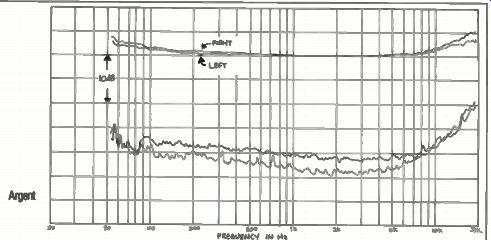
------------
simply does not let enough of the music through, and produces some complex colorations in the midrange and upper midrange.

You can't go back to even the best of the Deccas once you have heard the Monster Alpha Genesis or Talisman Virtuoso DTi. Anyone want to buy a used Garrott Decca?
Decca Super Gold: $499
If the Garrott Decca shows its age, the Decca Super Gold shows its lack of quality control.
From the midrange up, it is more colored by obvious frequency irregularities than the Garrott, and the imaging is a bit muddled. Depth is poor, and the initial illusion of speed gives way to the feeling that something is ringing; the more powerful notes don't stop quickly enough to let the detail through
Dynavector DV-17DMR: $480
Dynavector DV-23SMR: $350
Like the Argent Diamond, the Dynavectors once set a standard in terms of upper-octave speed and detail. Again like the Argent, how ever, they have been clearly outpaced in terms of natural detail and speed by newer competitors, such as the Monster Cable Alpha Genesis 1000 and Talisman Virtuoso DTi. The bass and lower midrange of both lack the apparent energy level to match the upper octaves. They are now the kind of cartridge your mother would say is cute.
Grado Signature 8 MX: $200
Most seasoned audiophiles (more than three years into the high-end disease) will be familiar with the Grado Signature series. The latest Grado Signature 8 MX does, however, feature a number of design improvements. The generator mass has been reduced by 75%, and the stylus has more resolving power. The magnet and wire used in the cartridge have been upgraded, and the electrical system has a smoother impedance.
---------------
Like all of the previous Grado Signatures, the chief merit of the 8 MX is its natural lower and middle midrange. Only the Koetsus and a few other much-higher-priced moving-coil cartridges do better in reproducing a musically convincing sound in this area. This is particularly striking when you have just returned from a live performance and suddenly realize the importance of this part of the musical spectrum.
Grado Signature 8 MX cartridge
At the same time, the Signature 8 MX has smooth and extended highs, and good overall musical life and energy. While the measured frequency response shows a significant rise in the highs, the apparent treble balance is mid hall, and there is clearly some loss of fine detail, life, and air compared with the best moving-coils-particularly with strings and brass. The upper octaves, however, have the balance of transient dynamics and overall balance of energy detail you would expect to hear if you sat in rows M to R during a live concert-hall performance.
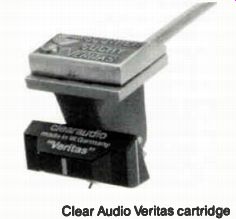
The bass combines power and extension into the deep bass with good control and good, to very good, definition. While the best moving-coils have more detail, particularly in resolving organ and string tones, many of the better moving-coils lack the Signature 8's impact and musically natural power.
Dynamics are also good to very good. The performance is certainly outstanding at the price, but if you compare the Signature 8 MX with the best moving-coils in the S600+ bracket, the overall dynamics and the contrast between very low- and very high-level pas sages are adequate, rather than exciting and musically involving.
The soundstage is very good. The width and height are excellent, without being exaggerated or leaving a hole in the middle. Imaging is excellent and very natural for the overall balance of timbre and dynamics. Voice and solo instruments are particularly good, having "air" while preserving the stability and natural focus. Depth is good. Again, enough new moving-coils exist to show that significant improvements continue to be made in this area, although they cost much more.
Grado Signature MCX: $300
The Signature MCX is Grados attempt to provide a fixed-coil cartridge with the advantages of both moving-coil and moving-magnet designs. It raises the cartridge's torsional resonance, and uses a very low-mass generator system. It also has a low impedance and inductance This gives the MCX some of the superior electrical characteristics of a moving-coil, although it still delivers a relatively high output of 1.5mV. The bass of the MCX is directly comparable with that of the Signature 8 MX. The Grado Signature MCX, however, has a slightly better lower and middle midrange. You do not hear dramatic differences between it and the Sig nature 8 MX, but the MCX has more resolution and gives the entire midrange more transparency and air. The MCX also does a very good job with strings and choral music- something most cartridges with this frequency or spectral balance have trouble with. Only the better moving-coils are its equal in the lower and middle midrange, and only the Koetsu Signature Red and van den Hul MC One clearly outperform the MCX in this region.
The Signature MCX's treble measures flatter than that of the 8 MX, but sounds stronger.
The Grado is still soft in overall sound character, air, low-level detail, and upper-octave dynamics compared to most moving-coils, but there is an improvement in the upper four octaves that makes the MCX sound more dynamic and "live" than the Signature 8 MX. The Signature MCX is also a bit more "for ward" sounding in hall position, although the moving-coil fan will still miss the detail and "excitement" of the better moving-coils. The MCX also is a bit too sweet, although slightly less so than the Signature 8 MX. Brass loses some of its natural aggressiveness.
The Signature MCX's overall soundstage is similar to that of the Signature 8 MX, with a bit more depth and detail. Imaging and placement of voice and instruments is better than that of the Signature 8 MX, particularly in fairly complex music or complex percussion passages.
The improvement in depth and soundstage detail is particularly important in increasing the overall realism of the sound. The Grado is very good in this respect for a high output cartridge of any kind, although the Talisman Virtuoso DTi high-output moving-coil is clearly bet ter-albeit at a modest $1900 increase in price.
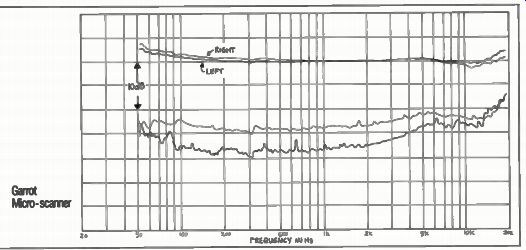
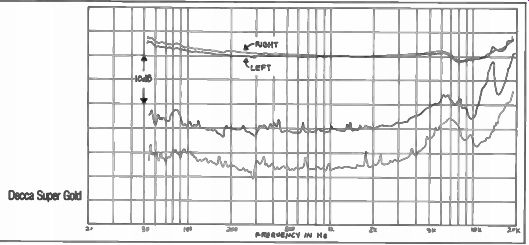
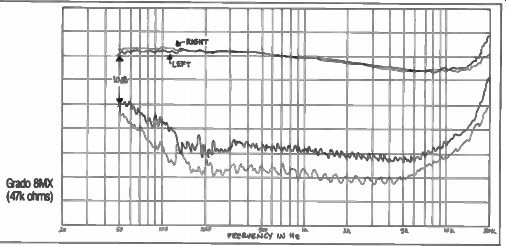

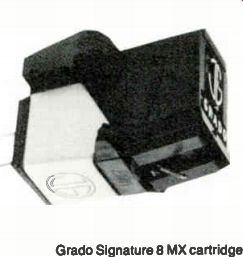

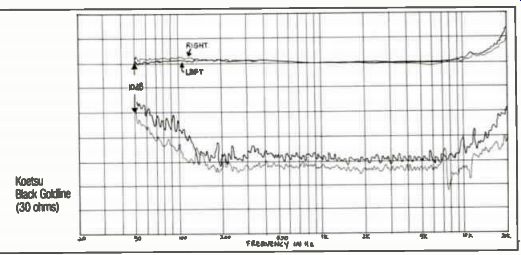
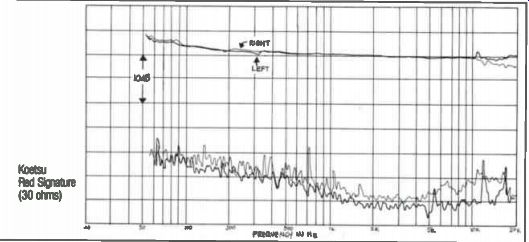
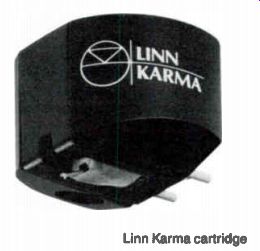
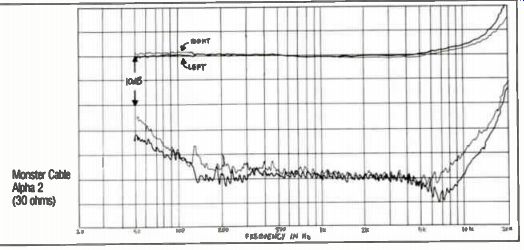
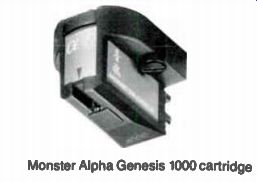
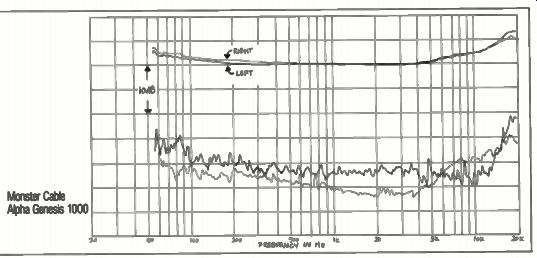
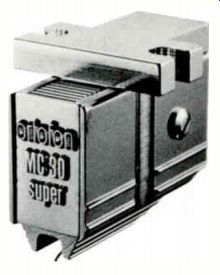
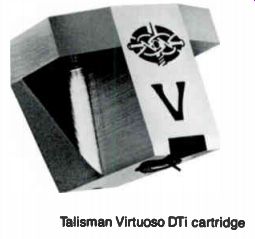
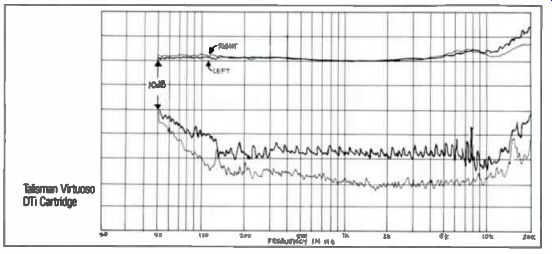

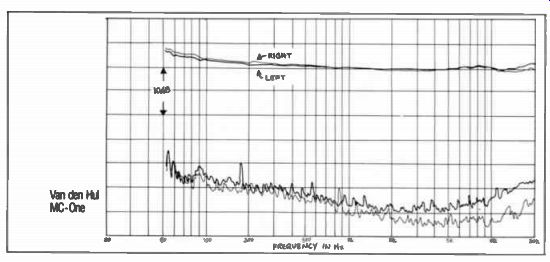

Kiseki Blue Silverspot: $600
Each year I listen to some sort of Kiseki as a religious penance. The cartridge is always good in many ways, but its sonic virtues are always offset by something just audible enough to be vaguely troublesome. The music from a Kiseki is never quite as credible as that from the best competition in its price range. The Kiseki Blue Silverspot is a good case in point.
It is hard to match to many arms because of its mix of mass and compliance: it needs an exceptionally rigid, medium-mass arm. Even then, it is a bit bright and lean, and the sound stage is a bit less stable and well-defined than its best rivals in this price bracket. The upper midrange and treble aren't hard, but they lack the inner detail and resolution of a Monster Alpha Genesis.
Things improve after run-in, and you may like the bass, which has a slight rise while retaining considerable control. Nevertheless, the Silverspot is not my cup of green (or blue) tea.
Kiseki Purpleheart Sapphire:
$900 The Kiseki Purpleheart Sapphire is superior in many ways to the Kiseki Blue Silverspot, but I would not really want it as a personal reference cartridge. There seems to be a rise in the presence region that I find musically irritating but that-I suppose-others must love.
-----------
Kiseki Purpleheart Sapphire cartridge
While I could not borrow this cartridge long enough to perform a frequency sweep, I did have trouble with the highs. The main musical content was smooth, but something was going on at the extreme limits of my upper-frequency hearing that I could have done with out. This was odd because the Purpleheart is a rather sweet cartridge in the upper midrange and lower highs; this part of the frequency range seems musically natural if you are willing to sacrifice the detail and air now available from the competition.
---------
The bass and soundstage were good to very good, but I found them hard to relate to emotionally. The bass had more power than information and control, and the soundstage did not lock in with the same stability featured by the best cartridges in this survey.
Koetsu Black Goldline: $750
I have generally been able to contain my enthusiasm for the Koetsus with more ease than many of my fellow reviewers. I can't deny the joys that the Koetsu midrange provides, but most of the models I have reviewed have tended to be indifferent trackers, with up per octaves that were just a bit too dull to be convincing.
The Koetsu line is also one in which I have seldom heard any clear correlation between cost and performance. Some of the most ex pensive versions have been little more than status symbols for the lunatic fringe who worry about how much their system costs but don't know enough to hear whether they've gotten what they've paid for.
That said, the current Koetsu Black is a very good cartridge in many respects. The mid range is warmer and more powerful than that of most moving-coil cartridges, without losing detail or being too warm. This is one of the most sensitive areas in making music enjoyable and convincing, and the Koetsu Black outperforms most of its competition in this area.
The bass is good, particularly in the mid and upper bass, its considerable power retaining a good mix of transient performance and control. There does seem to be a slight rolloff, however, from the lower mid-bass down, and other cartridges do notably better in the deep bass.
The highs are considerably better than those of many earlier Koetsus, including some with stratospheric prices. They are hardly the state of the art, however; the Koetsu Black sounds just a bit lean, without the life and air available in many similarly priced competitors. The overall soundstage is quite good, but a bit veiled and lacking in information. The Koetsu Black is polite when it should be exciting, and dull when other cartridges reveal a lot of inner detail and added information. A very good cartridge in most ways, it can no longer be considered of reference quality.
Koetsu Rosewood Signature: $1695
The Koetsu Rosewood Signature is a different story. Later production samples of this cartridge sound even more superb than the early production; they measure superbly as well.
The Rosewood represents the state of the art in the lower and middle midrange, making recorded music fully believable. This does come at the cost of some detail when compared with competitors like the Talisman Virtuoso DTi and Monster Alpha Genesis, but detail isn't everything. Nothing else I have heard is quite as real in this area.
The bass is deeper and more dynamic than the Koetsu Black Goldline, without any exaggeration or artificial rise. The upper octaves also seem much smoother and full, and are much more musically natural. However, they fall notably short of the best competition in transparency and resolution. As a result, the
------------
apparent timbre and imaging of virtually every record is moved farther away from the listener.
This does make most recorded music seem more natural and believable, however. Live music isn't heard four feet away from the instrument.
The soundstage is tight and very well defined.
Width freaks won't love this cartridge, but concertgoers will-there is a very natural overall balance of information. Oddly enough, how ever, this cartridge proved uniquely sensitive to azimuth adjustment. With what seemed to be good visual alignment, there was a hole in the middle. With correct measured alignment, the soundstage locked in tight, perfectly integrated with the overall timbre and dynamics.
In short, this was one of the four best cartridges in this survey and one of the four best cartridges I've ever heard. It is a cartridge for music lovers rather than detail freaks, but then I've never known a detail freak you could trust with national secrets, church funds, or small boys.
Linn Karma: $995
I should carefully qualify my remarks about the Linn Karma with the fact that I heard this cartridge only on a Linn set-up owned by a Scots-Sicilian friend of mine. He brought it over, set it up, and removed it with the agreement I would not touch or tweak his handiwork. One doesn't argue with this kind of ethnic mix.
Even so, it was clear that the Karma is one hell of a step up from the Asak, a very good cartridge in its day. Its deep extended bass compensates for the Linn turntable's slight loss of power in this area, and the control is, at the least, very good-something I do not always find in moving-coils with a slight rise in the deep bass. It is a very open and dynamic cartridge. If it did not rival the Monster Alpha Genesis or Talisman DTi, it came close to the van den Hul MC One.
There seems to be a slight rise in the upper midrange. The effect is not hardness, but a slight loss of air and harmonic sweetness. The soundstage was good, although slightly wider than deep, and a bit forward-sounding: this is a row C-F cartridge. Imaging was good, al though not quite up to the top cartridges in this survey which provide a more convincing overall mix of detail and integration.
--------------
Linn Karma cartridge
In broader terms, the overall sound was better than some of the above comments may indicate. Every cartridge has some sonic problems, and the question is often how well they balance each other out. The Linn Karma is a bit like the Koetsu Signature in that the end result is consistently more musical than an analysis of its parts might indicate, and much more musical than most of the competition.
This is also a cartridge whose merits show up better on some kinds of music than others.
While perfectly acceptable with classical music, the Karma comes into its own on jazz with a strong bass section and well-recorded rock.
Monster Alpha 1: $325
The Monster Alpha 1 can't really sound that old! In all seriousness, the Monster Alpha 1 now sounds like an antique. Where it once rivaled the state of the art, it now sounds veiled and hard, and there is a distinct upper-octave rise. Bass lacks detail, the midrange is slightly congested, and soundstage and imaging are mediocre by today's standards. It is hard to think this was once a real contender.
Monster Alpha 2: $650
The Monster Alpha 2, by contrast, is still quite a nice cartridge The bass is solid, although not quick or detailed. The lower midrange is good, although lacking in the detail and natural dynamics of its better rivals. The middle of the midrange is good. Even though it measures as having more high end than the Alpha 1, the Alpha 2 also has less hardness and etching in the highs. The Alpha 2 does have a slight rise in the upper octaves, but its main problem in this area is that it fails to retrieve the musical detail that its better rivals provide.
The Alpha 2's overall ability to resolve harmonic detail and handle transients and musical dynamics now only ranks as good to very good. As with some other cartridges, the state of the art in these critical areas has moved on, leaving the Alpha 2 behind.
The soundstage is still good to very good, but the better competition offers considerably more realistic depth and better placement of instruments in every dimension, without the artificial enhancement or etching of the Alpha 2. The coherence between channels is also not convincing. This is disguised a bit with high impedance loading, which seems to expand the soundstage at the cost of overall control of instrumental and vocal placement, and control of musical dynamics.
Monster Alpha High Output: $650
I don't know why I put this in a survey of reference cartridges-perhaps because I wanted to compare the whole Munster family.
I heard the Alpha High Output as a prototype, during its early production, and in what I sincerely hope will be its farewell concert. The upper five octaves are too hard, grainy, and emphasized. I don't care what this is called, it is a high-output version of the Alpha 1, not the Alpha 2. A Grado Signature 8, one of the lower-priced Adcoms, and the Shure V-15 V are all more musically natural. Ah well, even the best families have their remittance persons!
Monster Alpha Genesis 1000: $800
If I seem somewhat down on the older members of the Monster cartridge family, it is because the Monster Alpha Genesis is so much better than any of its predecessors. It is a clear sign that the state of the art in cartridges is still advancing at a rapid rate. It is also a leading reason why I have down-rated the Alpha 2 and many other former contenders in the reference cartridge sweepstakes.
--------------
Monster Alpha Genesis 1000 cartridge
The Monster Alpha Genesis is a superb cartridge in virtually every respect, an equal rival of the Koetsu Signature Red, Talisman DTi, and van den Hul MC One for the title of Best Reference Cartridge I've Ever Heard. In fact, it is difficult to put this cartridge in perspective be cause it does everything so well. The most I can do is to compare it with the other top three cartridges in this survey:
• Only the Talisman Virtuoso DTi equals it in the ability to recover musically natural detail with all the dynamic realism and reproduction of low-level harmonics and information on the record. Both cartridges reveal this detail with different nuances, and create a different sound stage with any given record, but both clearly stand out in terms of their ability to reproduce believable musical detail. The Alpha Genesis 1000 has slightly more output than the Virtuoso DTi in the bass and lower midrange, but the difference is not one that would lead me to pick one over the other. Both have excellent dynamics, a credible, slightly forward timbre and apparent hall position, and both will make your system and records come alive.
• The contest between the Monster Alpha Genesis and the Koetsu Signature Red is also very close, although they sound far more different. There is a clear tradeoff between different sets of benefits. The Koetsu is still unrivaled in the lower midrange, but the Alpha Genesis has more natural detail from the upper midrange up. If the Koetsu is sometimes a bit sweet and forgiving in the upper five octaves, the Alpha Genesis is equally sweet without losing any detail. The Alpha Genesis has more detail in the bass, but a little less force in the deep bass. In many ways, the issue is one of whether you like to sit forward and become directly involved in a performance, or slightly back in the hall, listening to a mix of direct and reflected sound. Both are musically valid approaches.
• The Monster Alpha Genesis is slightly quicker and more detailed than the van den Hul MC One, but the van den Hul has deeper and more dynamic bass, and a little more force in the lower midrange. A pure detail freak will go with the Alpha Genesis, but a timbre and pitch freak will probably try to match the choice to his or her system's overall balance.
More broadly, the Alpha Genesis 1000 has a very natural apparent soundstage for most home listening, particularly with popular music, chamber and small orchestral music, voice, and small- to medium-sized jazz groups.
You not only get width, but instruments and voices seem naturally placed in an arc from left to right and front to back. If you've thought you heard good imaging with the Alpha 2 - and think my comments on the Alpha 2 too harsh-listen to the Alpha Genesis 1000. The Alpha Genesis is also significantly cheaper than the other three rivals for my choice of top reference cartridge. It may not suit your particular system or taste, but I have heard $3500 cartridges that don't really come close. No cartridge I have heard at any price is convincingly better in terms of overall performance.
Ortofon MC-20 Super: $300
The Ortofon MC-20 is considerably better than its predecessors, and is quite good for a $300 cartridge. It is a bit lean, however, and overall frequency balance is tilted so that the highs are emphasized at the expense of the bass. This is perfectly tolerable if your system does not have any upper-midrange hardness and your speakers tend to roll off a bit or seem a bit slow in the highs.
The dynamics are good, but the bass is a bit slow and over-controlled, the lower midrange just a bit dull. As is the case with many cartridges, it gives the impression of a very wide but slightly shallow soundstage. Instruments have air and good placement, but the quicker and subtler details of its higher-priced rivals are missing. A good cartridge with many of the sound characteristics of a good CD player, but not the state of the art. Output is a bit too low to avoid slight noise problems, or a slight compression and loss of upper-octave response with many preamps.
Ortofon MC-30 Super: $450
The MC-30 Super, supposed to be derivative of the MC-2000, is a better cartridge than the MC-20. The main difference is a significant improvement in the resolution of the upper midrange and treble. Otherwise, the MC-20's basic sound character is mirrored in the MC 30. The frequency balance tips upward, there is less depth in the overall soundstage and imaging, and the resolution does not equal that of the Monster Alpha Genesis, Talisman Ortofon MC-30 Super cartridge Virtuoso DTi, or van den Hut MC One. It is much better and smoother than its predecessors, however, and much more of a music lover's cartridge.
Shinon Red Boron: $659
The Shinon Red Boron holds up very well, although it has been around longer than many of the cartridges in this survey It is still a very neutral cartridge, with good overall frequency response, speed, detail, and soundstage performance Its upper-octave response is slightly elevated, but not aggressively so, and there is no artificial spotlighting or "etching" of the highs and imaging. Like the van den Hul MC 10, however, it is outpaced in terms of speed and detail by the Monster Alpha Genesis.
Shure V-15 V MR: $220
Shure Ultra 500: $400
Shure doesn't always have an easy time of it from high-end reviewers, and I suppose they won't get the best of times from me. I included the Shure V-15 V MR in this survey because so many of the reference cartridges I've discussed are expensive-often more expensive than most audiophiles can afford. The Shure V-15 V MR commonly discounts at mail-order houses for $125-$140. Most of the other cartridges discussed here do not discount heavily, if at all.
What you get for your $125-$140 is a relatively colorless cartridge that works well in medium-quality and even mediocre arms.
"Colorless" is, in this case, a blessing. I've heard many reviewers praise other cheap or moderately priced magnetics, but when I tried them, I found that they accentuate some performance characteristics that a particular reviewer may like, but which comes at the cost of overall balance.
The Shure V-15 V MR does a good job of let ting all the music through. It has flat, extended frequency response, good detail, good dynamics, and a stable and realistic soundstage. It does slightly veil virtually every aspect of performance, but does less damage in the process, without calling attention to itself. If you want a budget "reference" cartridge, I believe that the Shure V-15 V MR is it.
That said, I can no longer get excited about the Ultra series-and I have contained my joy from the start. The top-of-the-line Shure Ultra 500 is better than the V-15 V MR, but not more than $20 or $30 worth in terms of percentage of total cost for percentage of improvement in detail, life, and air. I'd much rather have an Adcom or Grado at $200-$325 than a $400 Ultra 500. Talisman Alchemist IIIS: $450 This cartridge shows its age more than most.
The brightness most reviewers detected when this cartridge first came out now seems almost unique when compared with more recent state-of-the-art cartridges. You can get a great deal more detail with far more sweetness and less listening fatigue. This product is now of interest only if you want to show just how much progress the Talisman Virtuoso DTi has made over the Alchemist . . .
Talisman Virtuoso DTi: $1200
. and the Talisman Virtuoso DTi represents one hell of a lot of progress. It is a superb cartridge, offering extraordinarily lifelike detail and natural musical sound. It is also a high output cartridge, which makes it the reference cartridge of choice for anyone with a well loved tube or transistor preamp without a high-gain phono stage.
Talisman Virtuoso DTi cartridge
The Talisman's great strength lies in its superb reproduction of the upper five octaves.
It competes with the Monster Cable Alpha Genesis and the van den Hul MC One in pro viding the most consistently believable and musical detail in these octaves, with no trace of hardness or grain.
Timbre, soundstage, and dynamics are a bit forward, but only a bit-say Row E. Instruments have superb placement, and more air and depth in the upper octaves than any CD listener may believe possible. The practical problem for a review is that this is also true of the Alpha Genesis and van den Hul MC-10, but I would defy anyone to precisely define the differences--you have to hear them to decide The most I can say is that the Talisman DTi tends to have the widest soundstage and most open sound, although this is as much a curse as a blessing. I can't help wondering if it-like the Alpha Genesis and van den Hul-isn't revealing detail that the producer may some times have preferred to be left hidden. Certainly, it is merciless in revealing badly placed microphones and poor mixes. Fortunately, these errors aren't all that common unless you listen to records made by little-known firms like Cost Before Sound, Deutchesgrungaphon, and R "C-minus" A. The lower midrange and bass are very good, but not quite up to the standard of the upper octaves of the Koetsu. The timbre and dynamics are just a bit recessed in the lower midrange and the bass. While the Talisman DTi lacks the artificial warmth of many moving-coil cartridges in the bass, and has excellent resolution of bass detail, it also lacks just a bit of the force that comes through on the Alpha Genesis and van den Hul MC-One.
The Talisman DTi is, however, an ideal cartridge for anyone trying to find out just how much detail his or her records contain. It is superbly and believably transparent, and definitely ranks as one of the four best cartridges tested in this survey.
van den Hul MC- 10: $695
If it were not for the Monster Alpha Genesis 1000, I would still rank the van den Hul MC-10 as a competitive reference cartridge. The problem is that while the van den Hul MC-10 still does everything well, it does not do anything quite as well as the Monster Alpha Genesis.
Also, its general sound character and advantages are too similar to the Genesis to allow it to stand out against such competition.
The Monster Alpha Genesis provides a level of detail of insight into the music that the vdH MC-10 lacks. It does not remove 100 more veils, but it does let fall one or two. As any good stripper knows, it is the last veils that count. A shift from the Monster Alpha Genesis results in a loss of dynamics, less ability to handle the top of the upper midrange and treble, and less overall coherence and focus.
van den Hul MC-One: $795
By contrast, the van den Hul MC-One is a much better cartridge than the MC-10. While sometimes described as a hand-selected MC 10-and looking somewhat similar, except for the color of its body-my sample of the MC One sounded much better than the MC-10, and measured better as well. The highs were flatter, and the MC-One had truly excellent separation and interchannel balance.
Whatever the reason, the MC-One has substantially better upper-octave performance, consequently producing significantly more musically natural detail without exaggerating any aspect of musical performance. "Neutral" is an overworked term, but the MC-One has a balanced and uncolored sound that makes it one of the best cartridges I have ever heard.
The MC-One's soundstage is open without being exaggerated. On good records, there is a wide dispersal of instruments and voice in musically natural positions without a loss of depth etching the imaging unnaturally. The ap parent seating position tends to be Row F to Row H, rather than the slightly forward sound of the MC-10, and there is good resolution of hall sounds and low-level detail. Strings, brass, upper woodwinds, and voice are very smooth.
There is bite in the upper midrange when this is natural, without any exaggeration or artificial detail.
There are, however, several areas where some slight improvement could be made. The bass has unusual power and will suit many systems, but lacks the definition and controlled power of the best competition. While the van den Hul MC-One's resolution of dynamics and detail were very good, the Monster Alpha Genesis 1000 and the Talisman Virtuoso DTi did better, with slightly more natural life and air. The Koetsu Signature Red is superior from the upper bass to the midrange. The van den Hul MC-One is clearly a top contender, but its top rivals are equally well worth auditioning.
Some Parthian Shots
This survey is obviously more introductory than comprehensive. Believe it or not, the 1986 Audio Annual Equipment Directory lists 151 cartridges in the $200 or more bracket, and 20 which approach or exceed $1000. While many of these products may never win nominations as the reference cartridge, there obviously are more candidates to hear. Leading omissions include the Carnegie, Cello, and the Linn Troika, but there are many more.
I look forward to hearing as many as possible. I have had a great deal more fun with this survey than most comparative reviews, and I hope that my praise for some of the latest designs will at least tempt you back into re-examining how good the latest cartridges can be.
Admittedly, the convenience of CD is terribly tempting. Without adjusting, worrying about dealer set-up and matching components, you can still get very good sound. As I said at the beginning of this survey, however, the tradeoff between the best CD player and the best analog phono front end still favors analog phono. A great CD player is one that does negligible damage to recorded music. A great analog front end is one that makes music come alive.
ADDRESSES
Adcom 11 Elkins Road New Brunswick NJ 08816
Tel: (201) 390-1130 Argent 150 5th Ave., #516
New York NY 10011 Tel: (212) 807-1598 Clear Audio Souther Engineering Corp. 429 York St.
Canton MA 02021
Tel: (617) 828-5050
Dynavector Systems USA Inc.
2217 S. Grand Ave Santa Ana CA 92705
Tel: (714) 549-7204
Grado laboratories
Indianapolis
Shure Brothers Inc.
4614 Seventh Ave. IN 46220
222 Hartrey Ave.
Brooklyn Tel: (317) 849-7103
Evanston NY 11220 Monster Cable
IL 60202 Tel: ( 718) 435-5340 101 Townsend Street
Tel: (312) 866-2200 Kiseki
San Francisco Talisman Sumiko CA 94107 Sumiko PO Box 5046
Tel: ( 415) 777-1355 PO Box 5046 Berkeley Ortofon Berkeley CA 94705
122 Dupont Street CA 94705 Tel: (415) 843-4500 Plainview
Tel: (415) 843-4500 Koetsu USA NY 11803
van den Hul 20 Higgins Dr. Tel: (516) 349-9180
Transparent Audio Marketing Milford Shinon PO Box 173 CT 06460
354A Yonge Street Hollis
Tel: (203) 874-3139 Toronto ME 04042
Linn Ontario M5B 1S5
Tel: (207) 929-4553
Audiophile Systems Ltd. Canada 8709
Castle Park Drive Tel: (416) 979-3162
[based on a 08-1987 Stereophile review article]
Also see:
A Little Network Workout -- why the elimination of inaudible ringing can improve the sound of phono cartridges
Prev. | Next |